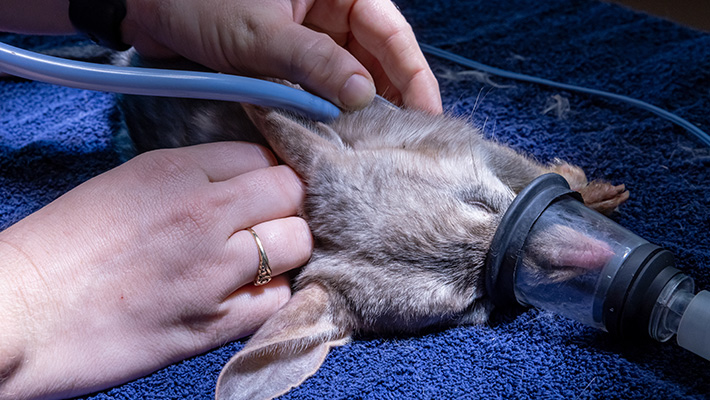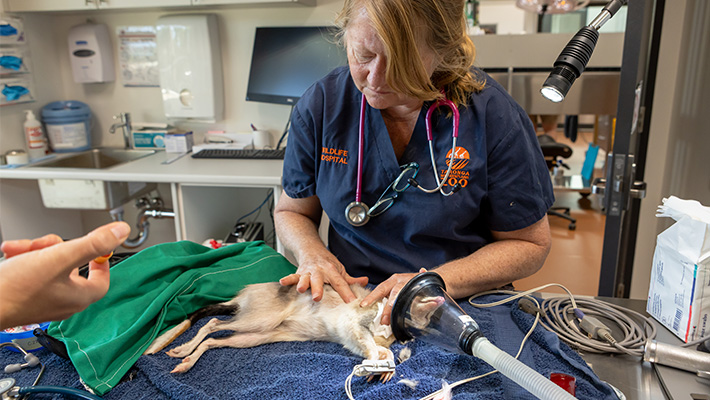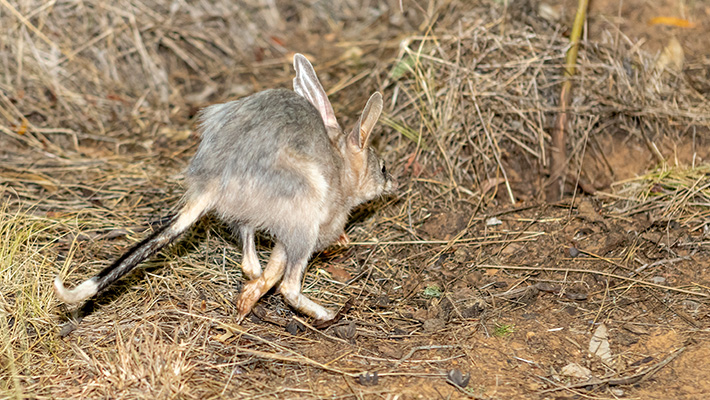Posted on 07th April 2025 by Media Relations
Greater Bilbies are thriving at Taronga Western Plains Zoo on Wiradjuri Country, with 32 individuals receiving comprehensive health checks just ahead of Easter.
The health checks were conducted across three days at the Zoo’s Wildlife Hospital and are an essential requirement before release to safe re-wilding sites.
Behind the scenes at Taronga Western Plains Zoo is the Taronga Sanctuary, a 110-hectare feral predator proof area where a free-ranging population of 18 bilbies was established in 2019. Since then, numbers have soared to over 130 individuals, a robust insurance population for this iconic yet vulnerable native species.
Before any bilbies can be translocated to support reintroduction efforts around Australia, the Taronga Wildlife Hospital team conduct health checks, including physical and dental examinations, microchipping, blood work and biopsy for genetic testing, all under anaesthetic.



“I was really pleased with their body condition, they’re obviously flourishing,” said Veterinary Officer Dr Charlene Klopper.
“They were free of any ecto-parasites, had beautiful coats, their dental health was good and we had a pretty good mixture of animals.
“Pre-release health checks are really important because we want to make sure that we release animals that will be able to flourish.”
The health checks are part of Taronga’s pre-release strategy to ensure that animals are fit for release, but also provide an opportunity to educate the public about this vulnerable species.
“At Taronga Western Plains Zoo, we’re quite privileged that our guests can actually have a seat outside the Wildlife Hospital treatment rooms and take a look through the windows to see what we’re doing,” Dr Klopper said.
“On the day of the health checks, there were some guests watching and they were excited to see bilbies. They’re an endangered species so it’s quite a privilege to be able to see them.
“It’s good to be able to educate people about this species and they can be involved in its conservation.”
Preparations are now underway to release the most robust bilbies to safe rewilding sites, to bolster to species reintroduction efforts in areas they have become extinct.
Following the health checks, some individuals were returned to the Taronga Sanctuary, which remains an invaluable stronghold for the species.
Bilbies were once found across 70% of mainland Australia, but have been reduced to fragmented populations in the Northern Territory, the Great Sandy Desert, Pilbara and Kimberley regions of Western Australia and south-western Queensland.
The main threats to their survival are loss of habitat, competition with introduced species and predation.
“In the wild, bilbies are struggling and that’s mainly due to feral cats and foxes,” said Bilby Keeper Leonie Pascua.
“Our bilbies are free-ranging, which means they have the chance to forage, dig and create extensive burrow systems as they would in the wild – but it also means we need to set traps to collect them for health checks and possible translocation.
“That’s why the Taronga Sanctuary is incredibly important because the bilbies have the space to thrive, so that when they are translocated, they display all the typical wild behaviours making them perfect to bolster genetically diverse populations across Australia.”
The Greater Bilby has been extinct in NSW for more than 100 years. In 2020, ten Taronga-bred Bilbies were released into Sturt National Park in north-western NSW as part of the Wild Deserts program, operated by UNSW Sydney on behalf of NSW National Parks and Wildlife Service. In June 2022, 32 bilbies were also translocated into the Australian Wildlife Conservancy’s Newhaven Wildlife Sanctuary in Central Northern Territory.
“Being part of Taronga’s Bilby conservation program is pretty incredible,” Leonie said.
“To know that our population is thriving here, and that we are releasing more to support critical conservation efforts is incredibly rewarding.”